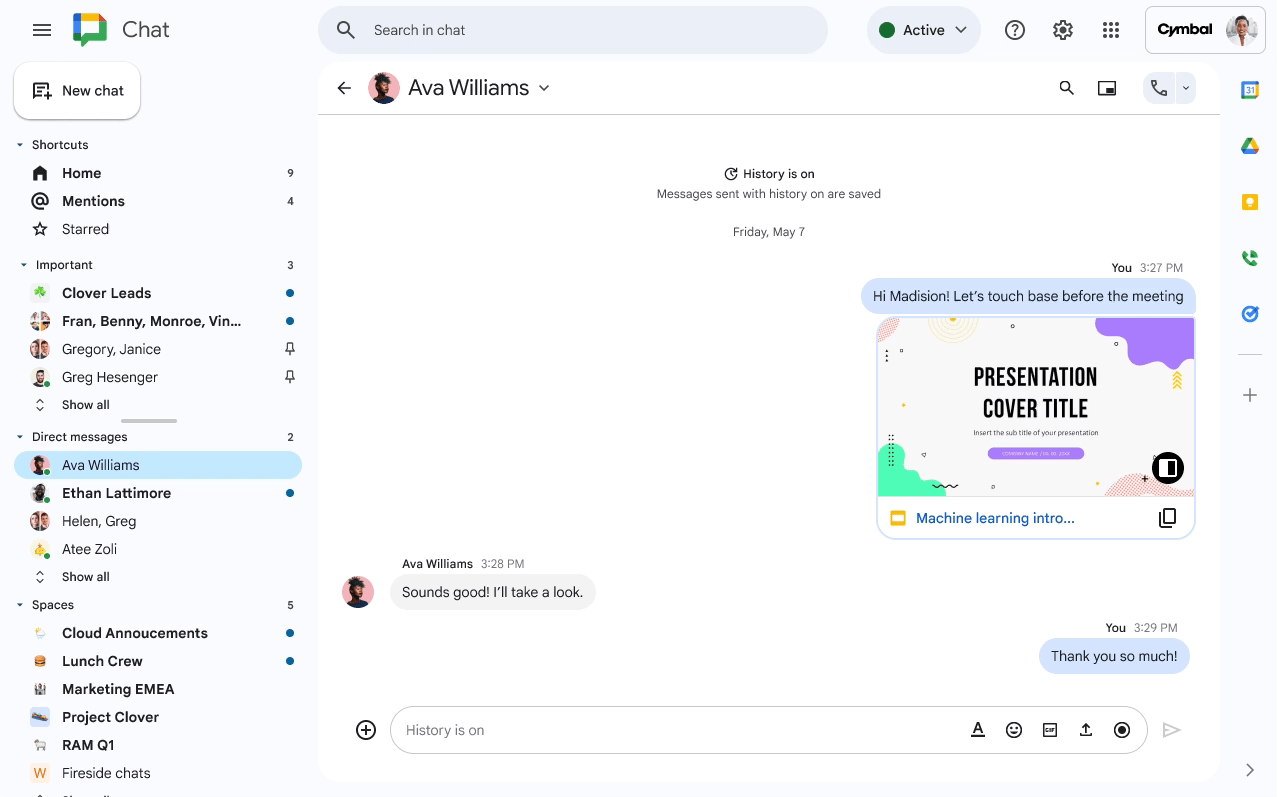Google is pushing Chat as a tool for team collaboration – and in a move aimed squarely at Slack users – it has added its own “Huddles”.
The instant voice meeting option will be available in direct messages, group messages and spaces; and is being rolled out immediately In Google Workspace but for rapid release domains.
It’s another welcome update for Google Chat users and comes after a series of subtle changes for Google Meet users including access to Gemini AI tools.
Who Gets Access to Google Chat Huddles?
Scheduled release domains will be able to access Huddles from January 6, 2025 and Google adds that there could be “up to 15 days for feature visibility”.
It’s landing for all Google Workspace users including people on Business, Essentials and Enterprise plans as well as non-profits.
 This just in! View
This just in! View
the top business tech deals for 2025 👨💻
Google adds that admins will need to turn on the Meet option for their team’s domain in order for them to create Huddles though they can join them with it turned off.
How Do I Use Google Chat Huddles?
Google has created a handy guide for users. It works much the same way as the option in Slack. To start a huddle, you click the Video icon in the top right corner of your chat message and then select “Start a huddle”.
By default, the huddle will be audio only but you can select to turn on your video.
If you are being called into a huddle, you will see a “chat chip” in your message thread that says [user] has started a huddle. You then simply click “Join” to enter the huddle. Google adds: “You will also see the huddles toggle in the Chat header for that conversation.”

Example of Huddles in action, from Google
Should Slack Be Nervous?
Slack has had some bad PR recently, including Disney’s decision to drop the platform after a data breach. According to Wired, Disney lost as much as 1.1 TB of messages and files to the hackers. Despite some reported grumbling among employees, the company is moving across to Microsoft Teams.
However, Slack is still pulling punches as a preferred tool and added AI options in April to compete with Gemini and Microsoft’s Copilot. (The latter, which is currently in the spotlight after accusations that users’ data is being scraped for training).
Google seems to be taking a slow but steady path to push for more customers and as AI tools become standard, it will be interesting to see what starts to emerge as the differentials between the different options.




